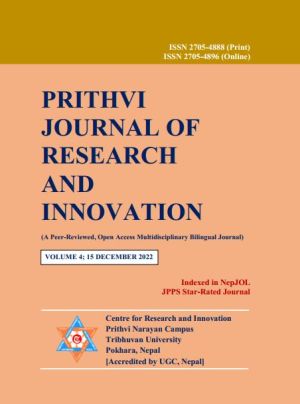Shift to Technology-Assisted Learning through Blended Mode: University Teachers’ Experience
DOI:
https://doi.org/10.3126/pjri.v4i1.50163Keywords:
Blended mode, ICT tools, learning enhancement, physical modeAbstract
This article explores the experiences of university teachers regarding the shift they have encountered in academia while using blended mode of learning. The study applies a qualitative interpretive design with semi-structured interviews to collect data. During the time of COVID-19 pandemic, almost all the universities in Nepal shifted their teaching mode from traditional face-to-face to online virtual teaching assisted by various information and communication technology (ICT) tools. Blended mode of learning is the amalgamation of traditional face-to-face learning and virtual learning supported by technology. The use of technology has become an integral part in higher studies to address the needs and challenges of various students. By the integration of virtual learning environment with the elements of face-to-face learning, flexibility can be made to include many students. Blended learning fills the gap by proving itself as an alternative mode in this rapidly changing and globalized world where almost everything has been digitalized. It also promotes self-regulated learning and improved student engagement. In the context when fully online mode is not possible, blended mode enables both teachers and students to cope up with the challenges. Problems concerning the speed of the internet, irregular power supply, lack of necessary devices and so on affect both online and blended modes. For the effective implementation, there is a lack of infrastructure development in both university classrooms and homes. Students can increase communication with teachers using blended mode so that learning can be enhanced which combines positive aspects of online and physical learning environment. The popularity of blended learning is increasing due to its inclusive nature and being an alternative method. The findings of the study indicate that blended learning, if systematically managed by making the provision of infrastructure development, can be applied as the best alternative for students’ learning enhancement.
Downloads
Downloads
Published
How to Cite
Issue
Section
License
Copyright (c) 2022 Centre for Research and Innovation (CRI), Prithvi Narayan Campus (TU)

This work is licensed under a Creative Commons Attribution-NonCommercial 4.0 International License.
© Centre for Research and Innovation (CRI), Prithvi Narayan Campus (TU)

